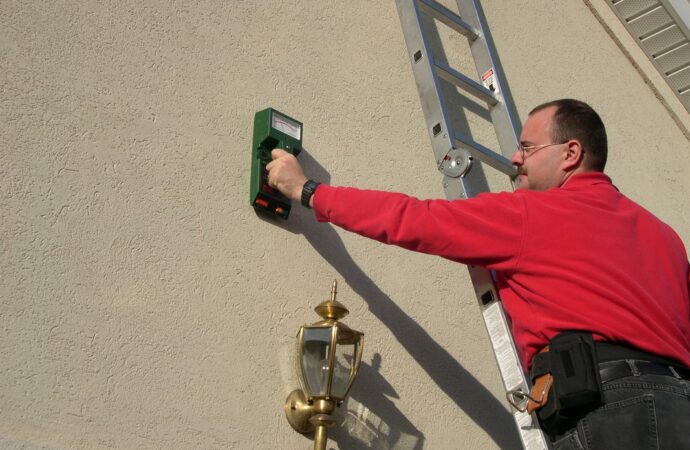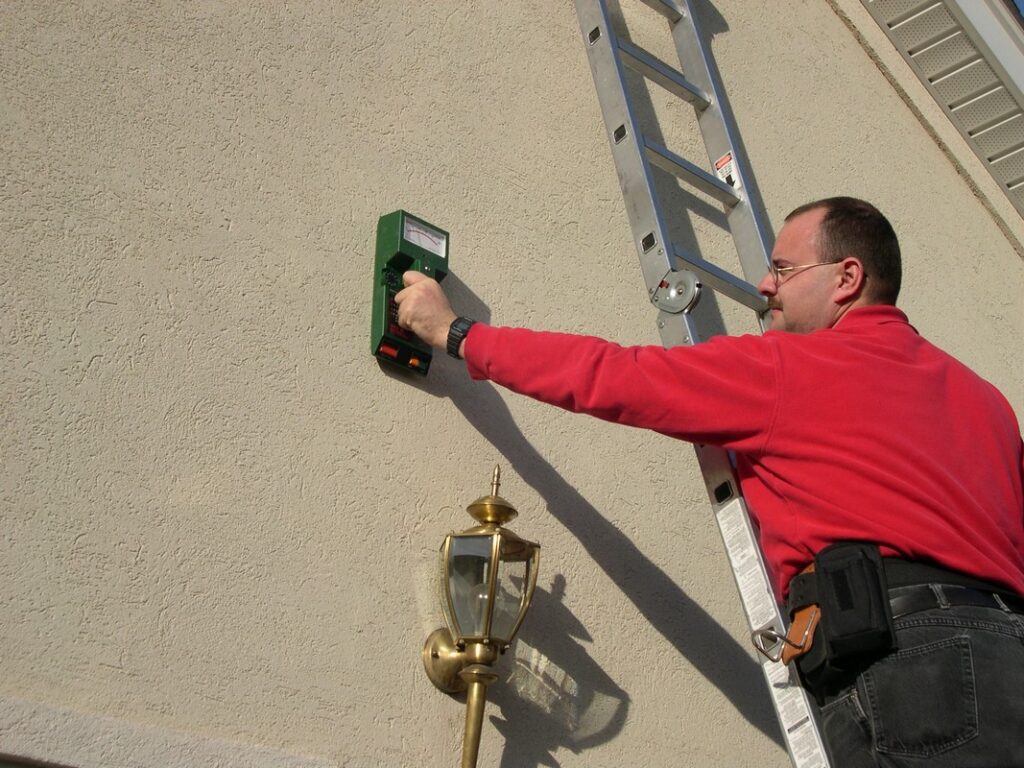Top Professional EIFS Inspection Services in Wellington, FL
Contact Us

Why Should EIFS Inspection Be Done?
The primary objective of inspecting the exterior of an existing house is to determine whether or not it is functioning correctly. An inspection should identify repairs that are necessary, effective, and economical. Water does not penetrate directly through the surface of the cladding, but it penetrates through the building envelope like the secondary moisture barriers and the primary moisture barrier which includes windows, doors, cladding, and sealants.
EIFS and other forms of cladding do generally not fail. Therefore, often the problem of moisture intrusion on EIFS can arise from moisture issues from one or more of the following:
- – Deficient caulk joints
- – Lack of caulk joints
- – Improper or lack of diverters
- – Improper abutment to dissimilar materials
- – Damaged surfaces
- – Other factors
If those conditions did not exist, typically there would be no water intrusion. The five-phase inspections will be performed at the completion of the Substrate installation, at the end of the waterproofing application, at the conclusion of the Insulation Board (polystyrene) installation, at the completion of the Base Coat installation, and at the completion of the Finish Coat installation. These inspections are needed to provide a level of quality control for general contractors, municipal code officials, and property owners for peace of mind concerning the proper installation of the EIFS siding on their properties.
During inspection check out on the following issues to determining if there is a need for remedial work on single-family, EIFS clad houses following EIMA’s published application instructions;
– Horizontal Joint at Floor Lines; the horizontal joints address the cross-grain shrinkage in dimensional lumber that could result in wrinkling or cracking of coatings, or bulging of the system which occurs when lumber experiences its initial loss of moisture.
– Sealant Joints around Openings and Penetrations; the sealant is installed to provide a weather seal and to accommodate movement between materials. Its utilization is essential at all terminations, including where EIFS terminate or meet other materials. Therefore, it Prevents water entry where EIFS meets other materials like around windows, doors, and other minor penetrations in single-family houses.
– Projecting Surfaces; location and climate will influence the performance of a projecting surface. Trimming around horizontally protruding windows and doors, quoins, and other decorative features that are is acceptable if no damage has occurred to the EIFS surface.
– Termination above Roof or Deck; a gap allows for appropriate system edge termination, ease of roof or deck replacement or repair. It also provides for the system and flashing to be inspected for proper installation.
– Completion above Finished Grade; maintain a gap between EIFS and the finished grade. The gap must be wide enough to allow access for visual inspection and treatment of the foundation for pest control.
– Kick out/Diverter at Roof/ Wall Intersection; accumulating water runoff should be directed out and away from the structure. Roof-to-wall flashing requires a kick out.
Some EIFS manufacturers require a third-party inspection of the EIFS installation as a warranty requirement diverter at its termination to ensure that the direction of water to the outside. We have well-trained certified inspectors, who have completed extensive training through the Exterior Design Institute (EDI). Our inspectors are knowledgeable in the installation details of all brands and styles of EIFS, one coat stucco, and traditional hard coat stucco systems maintaining their certification and training on an annual basis. As always, we will provide a comprehensive report after each inspection pointing out installation flaws and moisture readings in affected areas.
Not only is the proper installation of the EIFS key, but proper routine maintenance is also critical. Having an existing EIFS property periodically inspected for failure or the breakdown of its components is a must. Because many times the symptoms of failures in the installation of EIFS are not visible, it is essential to have an EIFS home adequately inspected by a well-trained inspector. If you own an EIFS property, don’t panic. Have your routine property inspection for failures, and the results of failures, in the EIFS components. If you plan to sell or buy an EIFS home or property, get it inspected before putting it on the market or purchasing it respectively.
Because stucco is a plaster-based material, superficial cracks and scrapes easily develop. So how can you be sure that you have a problem that needs to be corrected? Part of our total stucco services is inspecting your exterior walls for signs of trouble. These things usually include large gaps that allow the outside air in, moisture and water intrusion, and even signs of pests coming in through the plaster. When you need to be confident that your walls are in proper shape or not, you need an expert’s eye for detail. Let us inspect your stucco for water signs today.
Locations We Serve
We offer the above services at the following locations within Wellington:
Additional HOAs We Service
If you are located in Palm Beach County and you don’t see your city/area listed above, don’t worry! We cover all of Palm Beach County. Fill out the contact form above or CLICK HERE and send us a message. We’ll get back to you asap!
Here is a list of our services you can get at Wellington Pro Painters & Popcorn Removal:
-
Commercial Painting Near Me
-
Commercial Popcorn Removal Near Me
-
Drywall Repair Near Me
-
Drywall Installation Near Me
-
Knockdown Texture Near Me
-
Orange Peel Ceilings Near Me
-
Residential Painting Near Me
-
Residential Popcorn Removal Near Me
-
Smooth Ceiling Finish Near Me
-
Commercial Painting Services
-
Commercial Popcorn Removal Services
-
Drywall Repair Services
-
Drywall Installation Services
-
Knockdown Texture Services
-
Orange Peel Ceilings Services
-
Residential Painting Services
-
Residential Popcorn Removal Services
-
Smooth Ceiling Finish Services
-
Commercial Stucco Installation Near Me
-
Complete EIFS Reinstallation Near Me
-
Custom Stucco and Texturing Near Me
-
Denglass Framing Near Me
-
EIFS Inspection Near Me
-
EIFS Installation Near Me
-
EIFS Wall Systems Near Me
-
Exterior Kitchen Stucco Near Me
-
New Construction Stucco Near Me
-
Stucco Application Near Me
-
Commercial Stucco Installation Services
-
Complete EIFS Reinstallation Services
-
Custom Stucco and Texturing Services
-
Denglass Framing Services
-
EIFS Inspection Services
-
EIFS Installation Services
-
EIFS Wall Systems Services
-
Exterior Kitchen Stucco Services
-
New Construction Stucco Services
-
Stucco Application Services

